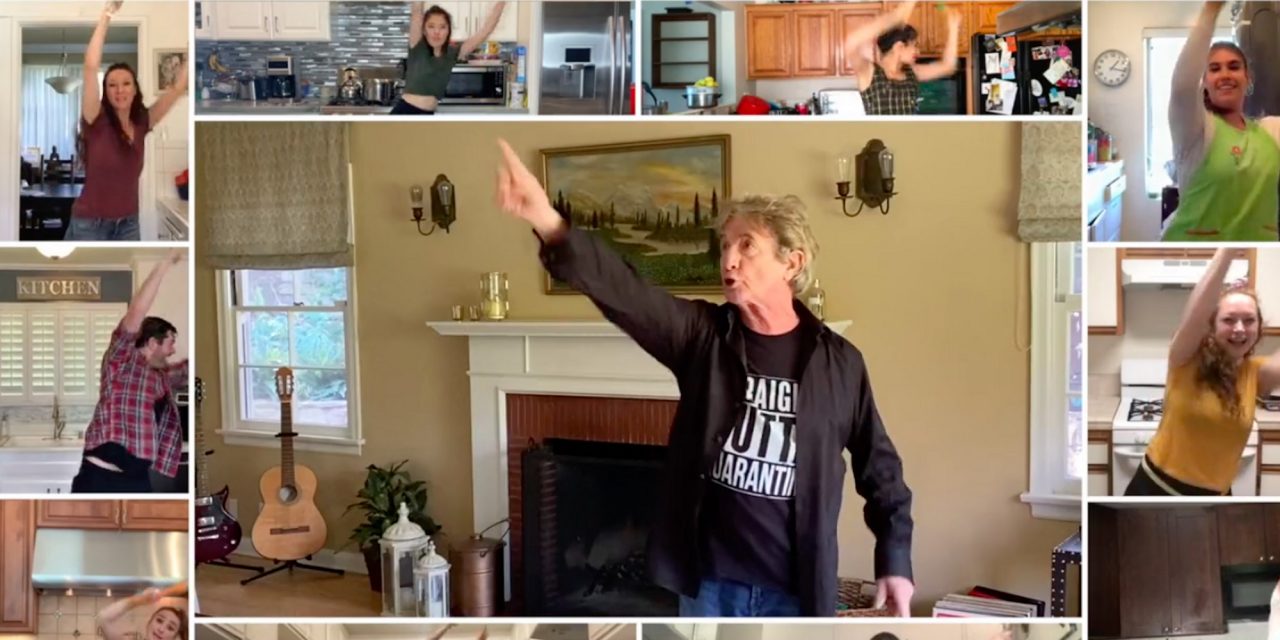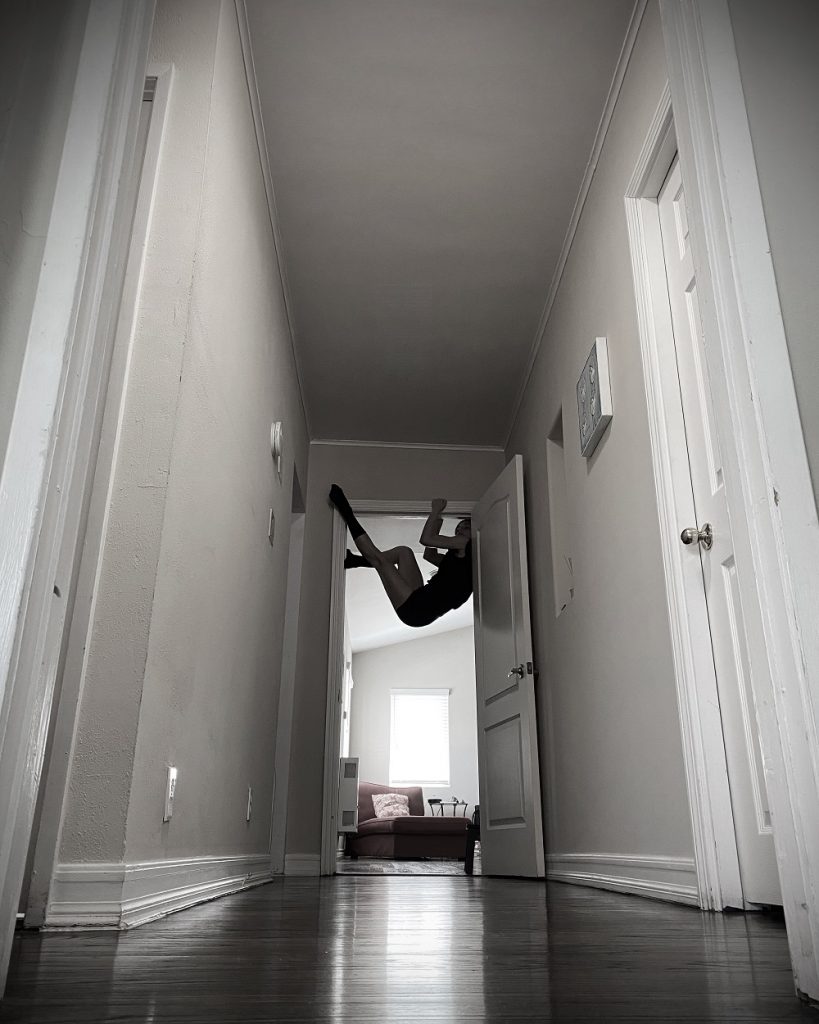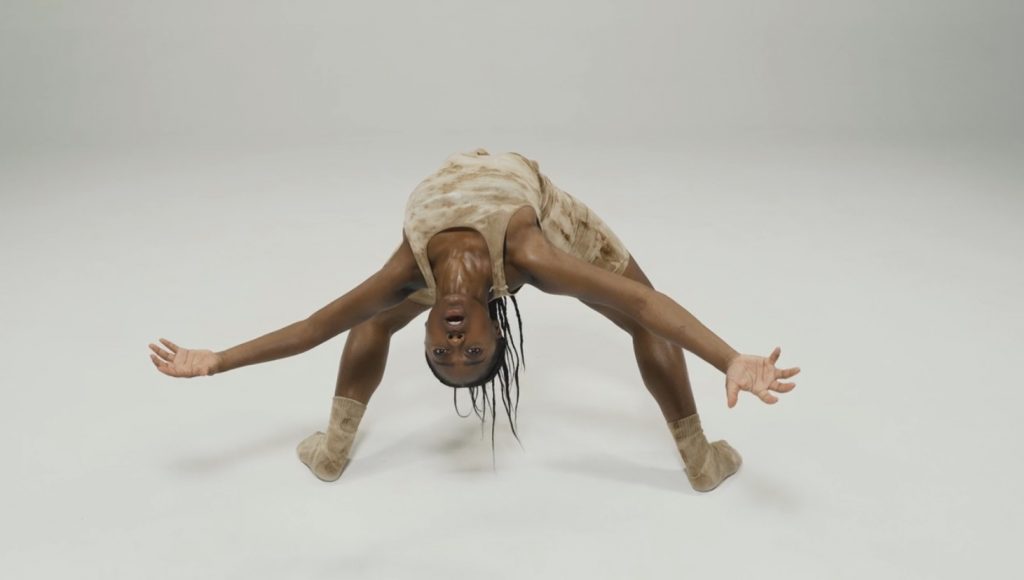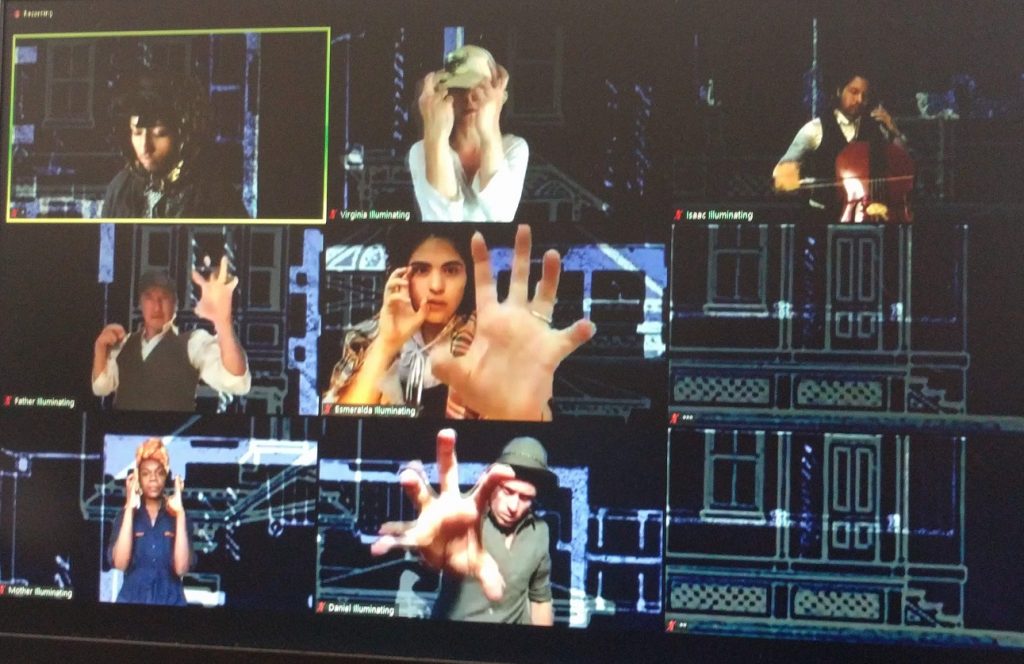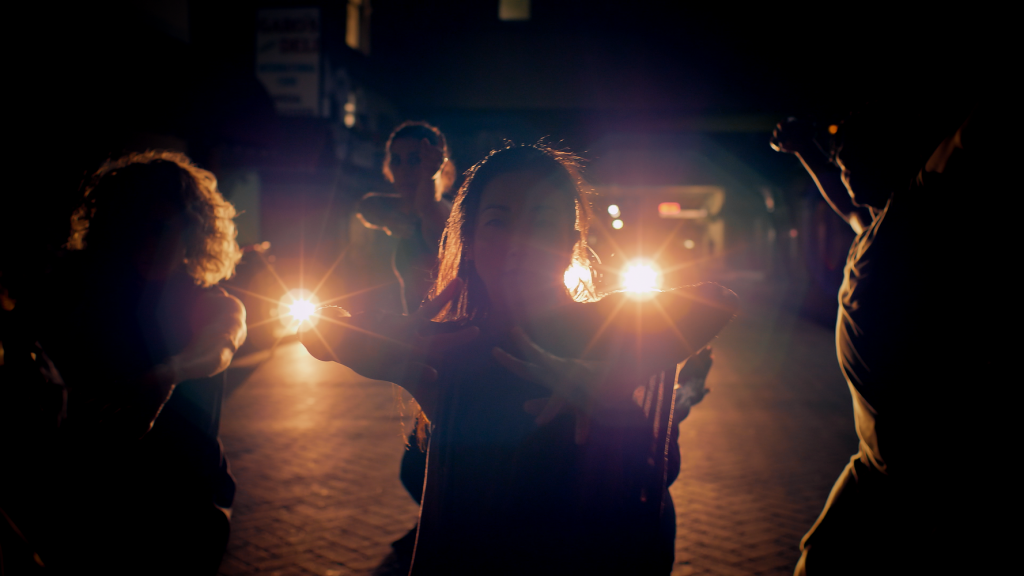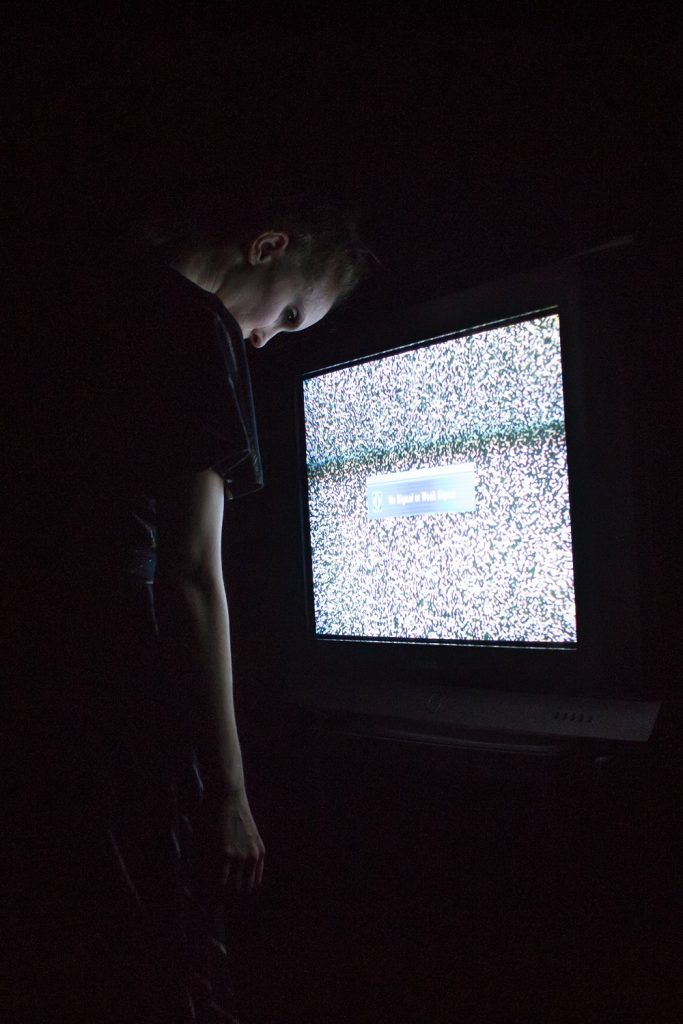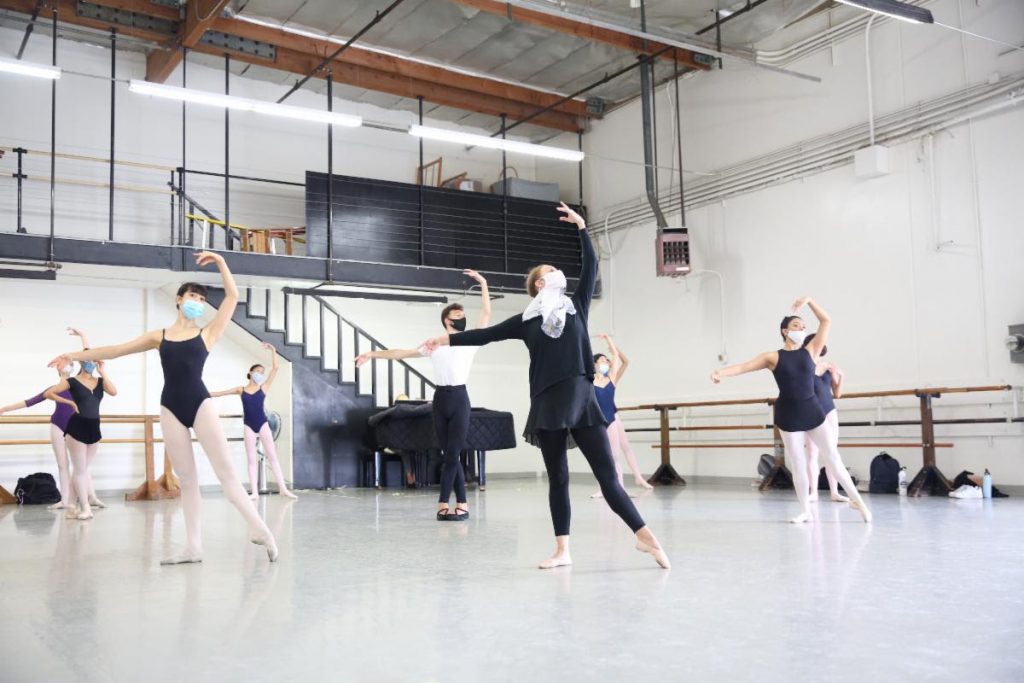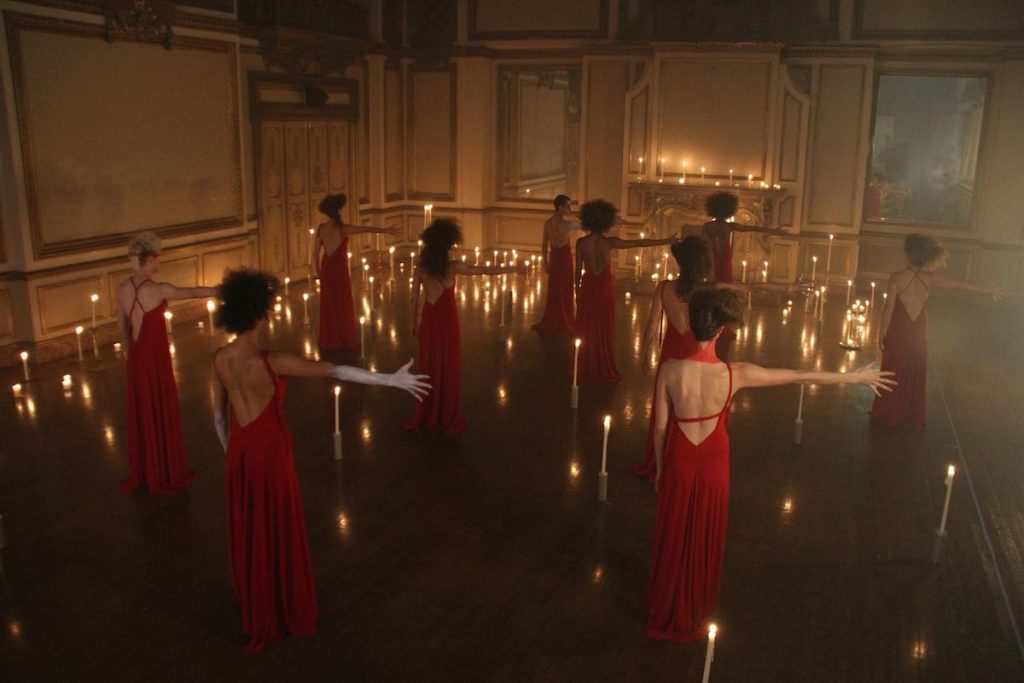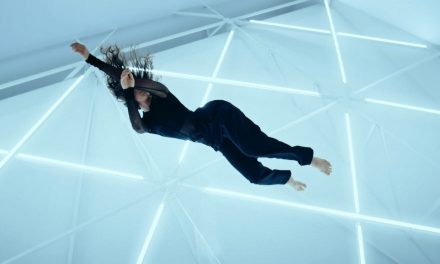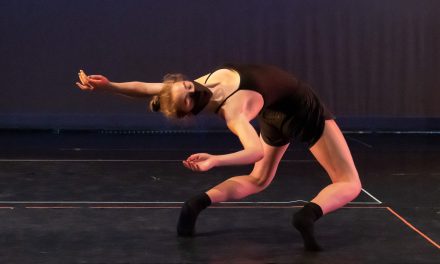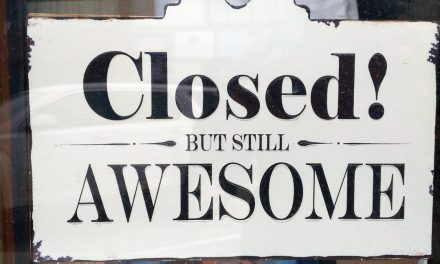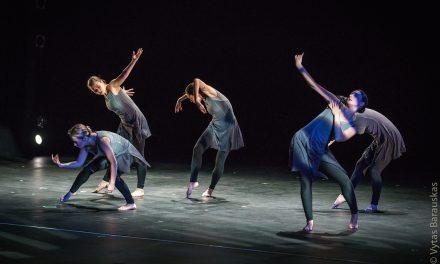Months into the shutdown caused by the COVID-19 pandemic, more and more dance instructors were offering online dance classes utilizing Zoom, Instagram and Facebook Live which led LA Dance Chronicle to create Growing List of Online Classes for teachers to advertise their classes. Some were asking fees for their classes while others suggested donations. The list became particularly useful for dancers who needed to stay in shape even if it meant taking class in their living room from a teacher who was also at home or alone in a dance studio somewhere across the world.
Company choreographers Roston, Duckler, Seda Aybay and others posted online pre-recorded and live performances on Zoom, Instagram and Facebook. Micaela Taylor, Jacques Heim, and Genevieve Carson created new works for the camera, while other companies that had filmed or videoed their work, re-issued dances to help spread the word that they were still in existence as a group. Brockus did both. She partnered with Dance Camera West to present a limited LA Dance Festival and she presented solo works, some of which were filmed at Brockus Project Studios. At the time this was published, Brockus had also sent out word for choreographers and companies to submit videos of works for the virtual LA Dance Festival 2020 October 2 – 25. This month long festival, co-presented by the Luckman Fine Arts Complex, will include four concert performances with 50 choreographers and four weeks of classes with free streaming each weekend plus online community classes that are free or have an affordable paywall.
” Mixed eMotion Theatrix always integrated projections, video and other multi-media into our work,” Roston noted.
“I have frequently incorporated multi-media elements into my work in the past, but I am not sure that this period has inspired new ideas in that realm for me. As much as I love creating multi-media work, being forced to use technology during the pandemic has felt crippling and uninspiring,” Stoller said. “I know I am learning things during this time that will have a lasting impact on my work, but it is hard for me to see clearly yet what that impact will be.”
Kate Hutter Mason, owner of Stomping Ground L.A. was quick to organize community meetings on Zoom to help dancers stay connected, air out their feelings and to discuss different methods of working and teaching online. I attended one of those meetings and it was inspiring to see and hear how members of the dance community were coming together to heal, stay positive and to move forward. Hutter Mason and I have continued to stay in touch to plan a re-uniting of the LA dance community once this tumultuous period has passed.
With dancers, teachers and choreographers adjusting so quickly to online classes and events, I was curious to know if after being forced to educate themselves in the field of online technology, if dance artists were thinking about incorporating this new knowledge into their future, post pandemic work.
“Nope. Not interested,” Bike said. “I’m 68 years old, and I want to do only what interests me. We do a lot of performing in communities where people rarely see live performance; everything they see is on video. We are trying to develop in them an appreciation for live performance and its unique human-to-human gifts. There is nothing like it.” In spite of this Bike has moved forward and planning ways to remain true to her vision while coping with the hurdles of a dire reality. In a recent press release for her company Bike wrote “Magic happens when dancers and audiences share the dance art LIVE, so starting early 2021 we are planning for live performances whenever possible and online performances when we must.”
Reichlin said that companies and other dance artists have no choice but to adapt to the ever changing technology if they wish to survive. “I have already been using multi-media, projectors, and video in my works since the mid-nineties, but never had to rely ONLY on media or video that cannot be inside or in a group.”
Brockus agreed that artists must learn to adjust to the new technology to continue. “It is not a substitute for live experience in any way but meetings and long distance collaborations can thrive much easier,” she noted.
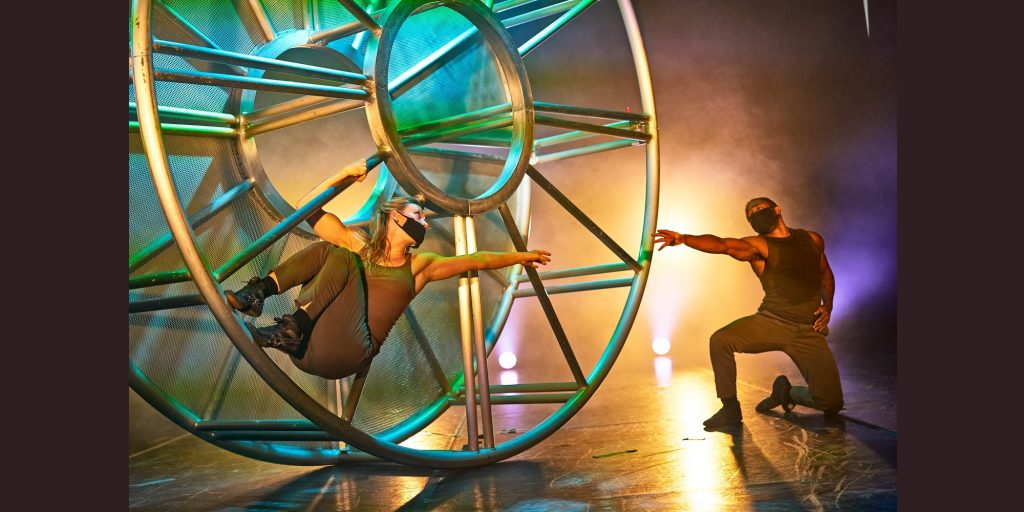
DIAVOLO “This Is Me”- (L to R) Majella Loughran (Rehearsal Director & Performer), Derion Loman (Performer) – Photo by George Simian
Gamson was particularly honest with her response regarding working online. “Hate Zoom more every day.”
“I want to begin combining online with live in the future of my teaching. I also, think that finally we will have an incredible record of the masters of our time so students can expand their view of dance,” DiVito answered. “Anyone can patch into a dance class that will teach them basics, history, nuances, allow for one-on-one coaching thousands of miles away. It has become a global sharing. For that reason, I think this “time out” is quite amazing. Someone in the far reaches of the planet can learn how to do a correct plié. It has pushed young creators into experimenting and celebrating dance in ways we’ve never thought about.”
A few dance instructors like Purtill were hoping to add virtual or streaming classes before they were forced to do so by the shutdown. “I think I will come out of it with a much greater understanding of the technology and an ability to utilize it to my advantage and for the benefit of my students. In short order I had to throw off my mantle of “tech fear” and dive into web design, YouTube streaming, FB and IG streaming, Zoom, and more,” she said.
Marks noted that doctors are now offering to see patients via video instead of in-person visits and that the pandemic has forced most to think twice before meeting with others in an enclosed space. “I think there are lots of ways that we will think twice about the need to be together in a room. Dancers can rehearse or develop ideas from anywhere in the world through zoom. We don’t have to pay for parking, travel, or take hours on freeways. If we are doing a residency, we might still be able to keep our day jobs… The possibilities are many,” Marks wrote, but confessed that meeting remotely, while possible and often necessary left much to be desired. “Nothing will substitute being together in real time and place,”
Choreographers and filmmakers like Hargraves and Sarah Elgart have been creating dances on camera for several decades. “I hope that the work of DCW over the years allows dance artists to see the endless potential of working on screen, not as a substitute, but as a full-fledged artistic medium for performance” Hargraves stated.
This period has been a learning curve for many but seeing figures freeze on Zoom while the music sometimes fades in and out has been frustrating. Producing good quality work online takes money and having people with the technical skills to make it happen. That said, the majority of these artists stated that they were more than willing to learn how to use the technology. “I am sure that dance films will explode with creativity over this time and into the future,” Brodie said.
Lynch agreed that this has been a steep learning curve. “I would like to gain new skills in technology and using it for creative projects,” she stated.
“I think it will be impossible for technology’s role in our lives to not show up in our future work. The physical habituation of being on a phone or laptop will inevitably affect our embodied practices. Our aesthetics will be affected by Zoom conferences and Tik Tok, Pearson wrote. “Additionally, the emotional toll of this time will live on in our bodies and come out in the ways we create choreography. I haven’t put any active thought into how my work will change or how I want to engage with technology but I think the influence is inevitable.”
For years, Sternberg has been bringing dancemakers and scientists together in her productions titled Awe and Wonder but added that this period has definitely caused her to think more about online technology. “Ironically, we were engaged to participate in an exciting new program at UC Davis in the fall that included performances, interdepartmental collaborations and workshops and community events. We had to pivot to think how to do this project virtually now,” she said. “My collaborators and I decided that we would reimagine the project (which had already been presented as a full evening-length work in LA and was completely choreographed and ready to go) in a way that could not be done on a proscenium stage, to use technology and video to do something very different from what we had planned on doing.”
As previously stated, many artists have worked in film and video for many years but when it comes to teaching dance online, many find that the onset of the pandemic feels different and has brought on a new kind of necessity of learning, whether they proceed into it willingly or not. “Teaching online and being able to take class online has been a deep salve and I want to express my gratitude to everyone who has been offering their practices remotely. People are setting their alarms at 2am to wake up and take class on the other side of the world!!” Shilling said. “And as I have mentioned in some of the other questions, I have been inspired simply to work in other media, not only digital, which feels like the work of a translator dealing in multiple languages.”
The Westside School of Ballet has been offering one of the largest selection of online classes that I have seen, and they have students taking classes on a daily basis from as far away as Boston, San Francisco and New York, and from other countries that include Japan and France. “The positive outcome of all of this is that many students have found us again and are so happy to be taking classes from their WSB teachers via Zoom. We have been able to connect with so many who no longer live in LA anymore and are enjoying our classes once again,” Clegg said. “It’s certainly challenging! I suppose whether or not I incorporate it into my work in the future will depend somewhat on the experiences I am currently having, though the option of on-line presentations does allow me to reach people who would not be able to see the work because of geography.”
“Our dancers are all teaching class on Zoom, which is a very poor way to actually mold a student,” said Helle. “Most students do not have enough room in their homes to seriously build the kind of body or maintain the kind of technique required to dance in a company like Luminario Ballet.” Luminario has long worked with film and other media artists for its live productions and if provided the proper funding, would be able to adjust to producing online performances as well.
Sefton considers online technologies such as Zoom to be yet another tool to arrange meeting with other groups and organizations that include city, county and state legislative bodies. She finds rehearsing online to be very frustrating, however. “You can’t always hear the music very well, the Internet can be unreliable, and movement is flattened out,” Sefton explains. “Creating for dancers for small spaces that are flattened out challenges you to think in new ways, which is always a good thing. I don’t think I will be sticking with it when we are all free again. There is a big bonus on not having to pay for rehearsal space, which has been a great savings, which right now means more money in my dancers’ pockets.”
There is nothing that will replace dancers, or anyone else for that matter, meeting and working together, and this holds true especially for live performances of any genre. “After restrictions are no longer in place, I imagine we will continue to selectively use online technology as a means to reach and engage with audiences around the world,” stated Pat Taylor.
“The pandemic has made us realize the value and inclusivity of the online space for dance and dance classes. We are able to reach people around the globe, people of multiple abilities at that,” stated McDaniel, whose work has long been rooted in dismantling misconceptions and stereotypes.
Warner felt that this particular question did not apply to her but does foresee that it is a time of great learning and exploration for other artists. “A few years from now we will see what inspiration was founded during this time of isolation,” she said.
Several artists brought up the subject of how to generate income by producing work online and as yet have not found a profitable solution. “I think that online and virtual connection is important and this has pushed me to think about how to create meaningful work or training with that limitation. Perhaps offering online courses is something I will use in the future and I will continue to delve into video work,” Harris stated. “However, to me dance is about the ephemeral and live interaction. The sweat, the eye contact, the breath, the sounds… Without that, the audience and dancer are missing the true experience. “
“Barak Ballet created a very innovative dance film, Breathe In, but still cannot be on the stage, just like us, which hurts the pocketbook of the company and the dancers,” Lavac said. “It also affects our alumni dancers such as Lucia Connolly who dances with Joffrey seasonally and also with Barak every year. Dylan Gutierrez, a principal dancer with Joffrey, who also dances with Barak Ballet. He was a guest artist and danced with Lucia at Westside Ballet’s Centennial Gala last year. They are both worried about what the future holds…. we all are!”
*******
Throughout the country and the world, one of the largest issues during the quarantine period has been how to stay in touch with loved ones, friends and colleagues. The virus has hit the elderly and people of color the hardest for separate reasons but being with those we know who have been infected has been an enormous challenge. Senior citizens who are living in nursing homes are unable to be visited by their children and grandchildren for fear of infection. Minorities face larger issues of large families living in small apartments and less or no access to proper healthcare.
Remaining hopeful and keeping a positive outlook depends on staying in close contact with others, and if not physically, then doing so by other means. The price of stocks for Zoom have skyrocketed since March 2020 because of so many people, including artists, installing Zoom onto their computers and utilizing it to stay in touch, teach, rehearse and perform. I was interested to learn more about the personal side of remaining in touch with their colleagues.
“We use zoom to check in and see the faces of our beloved family and friends, no matter where in the world,” DiVito wrote. “I take class now with friends in San Diego, Milan, Rome, and Palestine…I’m in a reading group with people who all live in Ventura (DiVito lives in North Hollywood). We have a dancer’s writing group that produces wonderful work weekly that’s done all online. Also, my colleagues are now designing really wonderful modules to teach online this next semester that are beautiful, interesting and make it fun to learn a fuller aspect of dance, dance history and music. These are pluses that have been developing through the opportunities for creative thinking in the midst of this unfortunate situation.”
“My company celebrates birthdays, so we have had virtual birthday cocktail hours. I also keep them in the loop of what’s going on with company plans via text and email. Phone, email and FaceTime calls work best with family/friends,” Bike said.
“As someone who lives by myself, I actually cried the first time I was delivered free dinners through the Mayors programs for seniors (I am 78) and do not leave my home,” Reichlin stated. “I felt that I was being taken care of, as in the beginning it was challenging to get food delivered, and most people I know, including our dancers, live miles from me. I talk with my brother on the east coast by phone.”
Hargraves’ answer was brief, “So many Zooms!!!!”
“ZOOM is my friend! I use Zoom for all my classes, meetings, and my mother-in-law’s 92nd birthday party,” Lynch said. Doede utilizes Zoom and WhatsApp to stay in touch. “Staying healthy and knowing my loved ones and friends are healthy is what keeps me positive,” She explained.
Some, like Marks, were fortunate to be able to stay connected to their students and dancers. She met bi-weekly with the dancers who worked with her on an evening-length work called Pastoral and said that they have grown together in different ways. “It has been an incredible gift to have deepened these relationships apart from rehearsals. Perhaps, a new way of learning, growing and imagining through the experience of dancing together, but now in a new dimension,” Marks said.
Others stayed in contact and offered each other comfort and support on YouTube streaming, Facebook, or via calls and emails. “I could hold board meetings, company classes, rehearsals, college get-togethers, private consultations, and personal calls which was helpful (although it’s exhausting to do too many in one day and I find the inability to read a person’s body language a major disadvantage during a call),” Purtill wrote. “I talk to my family on the east coast every week and once it was okay to go outside, I have done socially distanced and masked walks with friends whenever I can. It has been a challenge to stay positive and mentally healthy for all of this time. The #1 thing that has helped me be positive has been giving over 120 free classes to dancers: I know I am helping their mental health.”
Brodie related how she used Zoom classes and FaceTime calls to help feel less isolated. “Also, I am glad I live in California with beautiful weather to go out for walks and exercise on benches, fences, stairs, etc. while out there.”
“As real as Zoom fatigue is, it has been an extremely useful tool for maintaining connection with dancers, students, friends and family during this time,” Stoller said. “It is important to have a reason to “show up” each day. I have stayed in closer touch with friends and family outside of LA during the pandemic, and these connections keep me going.”
“I don’t know if I’ve done a great job with this,” Pearson mused. “I don’t think I’ve remained “positive”. I think I’ve remained stable, pragmatic, and present with moments of contentment or optimism, but for the most part I’m experiencing negative emotions. Feeling these emotions, acknowledging them fully, accepting them and moving through them has allowed me not to wallow or dwell in the negative, but to say I’m “not negative” doesn’t necessarily equate to “positive” for me. The situation is far too dynamic.”
Pearson went on to state that he tries to allow his students, friends and family to also have the space for inner reflection, be it positive or negative. “I’m not very consistent, but when I do engage with others I think the time spent has more quality. I try to always say “yes” when my time is requested for a check-in or phone call, and when the answer has to be “no” I make sure to reschedule,” he stated.
Roston remains positive by working, by thinking up new projects and making them a reality. She feels that not knowing when the pandemic will end we all need to remain optimistic and patient. “With more available time (no running around, no rehearsals) I’ve had time to broaden my knowledge of dance by watching a lot of videos of international dance performances. I’ve also researched material for projects which involved reading historical material, something I would never have had patience to do before this,” she said, explaining that she speaks with friends, has large family Zoom meetings and virtually rehearsing with her company helps tremendously. “ I go for socially distanced walks with my husband and friends. I like to pick a new Los Angeles neighborhood while walking to check out the architecture and landscaping. I’m a native Angeleno but I’ve taken walks in areas I never knew existed.”
The online classes at Westside School of Ballet has been the silver lining for Lavac because it has helped everyone involved realize how much they love doing what they do. It is something that they all still share. “The classical ballet world is a very close-knit community — and I have seen that this whole experience has actually brought us closer. We have come together in this crisis and are literally and figuratively hanging on to each other,” Lavac said. “We are rallying together and keeping each other’s spirits up. It’s a very interesting phenomena. People we have lost touch with – because of how busy one gets in the world – have reconnected. We are a very close family.”
Sternberg stays in contact with friends, family and colleagues through zoom meetings and phone calls. “I feel my social circle has greatly diminished during this time but that has been OK. I have actually been quite busy participating in groups like antiracism awareness, creative salons and artist’s forums. I’ve also been reading a lot, particularly non-fiction and doing a lot of inner work which I don’t usually give myself the time to do,” she said. “This is what has helped me remain positive, because God knows reading the paper every day and keeping abreast of what’s going on in this country is enough to keep me in bed with the covers pulled over my face.”
“Zoomzoomzoom!! The old telephone, the USPS (thank you) and the occasional distance walk or distance dance (bless these)” Shilling said enthusiastically. She has been moved by the Black Lives Matter movement, by her friends and fellow artists sharing what they are doing and thinking about all of these issues. “ The positivity lies in the possibility for radical change and radical re-imagining of our society on so many levels. The possibility of a world where BIPOC lives matter, where we see and sense each other with greater compassion, where we consider, reflect on and live our values as an interconnected web of beings and environment,” she added.
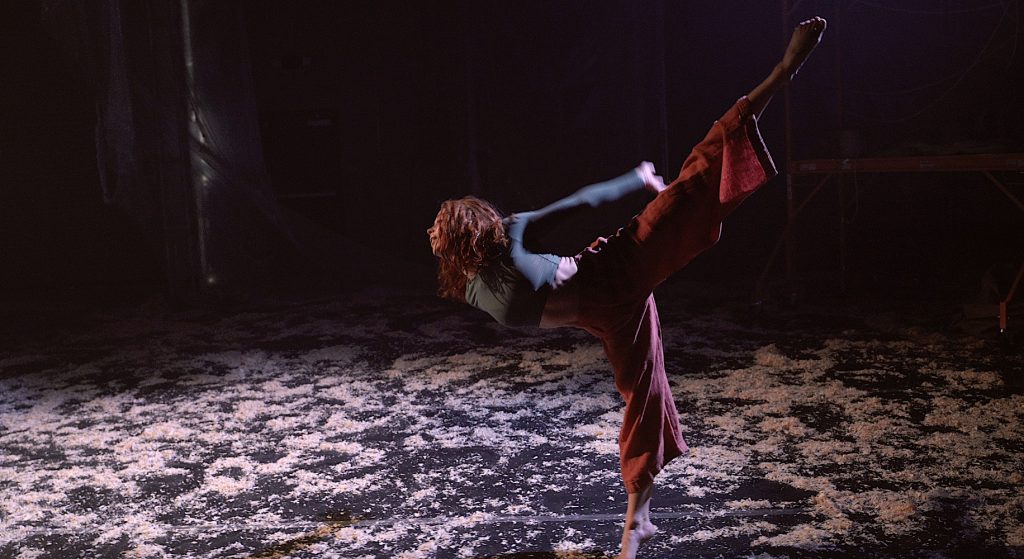
Angel Tyson in “Blinding Lights” a film by LA Contemporary Dance Company and Vitamin String Quartet – Still courtesy of LACDC
Helle says that she stayed in contact with her company via texts and phone calls. ”I text, call, email, my friends and colleagues. I joined two political advocacy groups trying to direct funds towards the LA dance community. (pro bono work),” Helle wrote. “For positivity, I start each day practicing tranquility, serenity, calm, and remind myself that there are those who love me and that my life is worthy, that my art is worthy.”
There are many around the world who find that remaining negative and protesting against the powers that be feels like the way not only to get through all this mess, but to help resolve the current issues that are confronting the world. “My foreign students (at CalArts) think Americans are crazy, refusing to wear masks etc. My daughter, who works at a testing site, is currently COVID-19 positive, but not extremely ill, thank goodness. My other daughter will be working for the census—which is important but scary,” Gamson wrote. “My mother, in memory care, has tested negative although there are 6 positive cases in her facility. My mother-in-law is immune compromised, my dancers are high risk. Am I keeping a good attitude about all this? No, I am not. This was a hideous fuck-up from the leadership vacuum. I work in education where we are trying to navigate a health disaster WITHOUT FEDERAL GUIDELINES! The US government has blood on its hands, and California, which started out as well as could be managed has slipped into complicity by acceding to those who yelled loudest. Shame!”
Sefton began sending out emails to her company dancers with resources. She shared information on how to apply for unemployment, received rental assistance and other avenues to receive help. “I’ve also sent a few texts to them and follow everyone on Instagram,” she said. “I’ve talking on the phone with family members more often and doing Zoom cocktail hours and birthday parties, Netflix parties, a few socially distance backyard visits and an occasional stand in the street and talk (from about 6 feet apart). Everyone who is working is so incredibly stressed and overworked; everyone who isn’t working is down, tired and trying so hard to find some motivation.” Sefton added that for the majority of the times, everyone has been supportive and kind.
Micaela Taylor reported that her company had completed its first virtual workshop where they came together in small intimate groups to teach and take each other’s classes. They also utilized Facebook to play games and to get to know each other a bit more personally. “This pandemic has created more of a people first dance second motto which has become more significant for us,” Taylor explained.
“We’ve stayed in touch through video chats and social media,” McDaniel said. “I’ve remained positive by having to be mindful and present, along with my husband, to care for our 2 year old son. He is a delight, and this time we’ve been afforded to bond as a family has been invaluable. We would never have been able to spend this kind of quality time with him if the pandemic hadn’t occurred and stay at home orders hadn’t been in place.”
Warner stays in touch with the dance world through Facebook and via her longtime friends. “I’m not a person to dwell too much in the negative and have found that the only choice we have is to take this as it comes, truly a day at a time,” she explained. “I am grateful to have found myself in a wonderful writing group and to be writing again. For me this has been a lesson in letting go of expectations and just allowing things to be as they are.”
Although her company, JazzAntiqua Dance & Music Ensemble has not been able to rehearse in person, Pat Taylor admitted that “… working together online, even though remotely, goes a long way towards keeping us connected.”
“Yes, we have tried to be positive and we have met up at the studio one at a time for paper work, filming, sharing food stocks,” Brockus explained. “We text and Zoom talk but we have not done rehearsal that way or any rehearsals.”
Like all choreographers with companies, Sarah Rodenhouse and Victoria Brown are used to seeing and moving with their dancers on a daily and weekly basis and therefore, found that the quarantine brought about anxiety issues of separation. To help, they began hosting online company classes. “In June, we hosted a fundraiser class in support of Black Lives Matter Los Angeles, and our company member Kiera Breugh taught choreography from one of her pieces that explores her relationship with racism in dance,” they wrote. “2020 has turned into a year of introspection.”
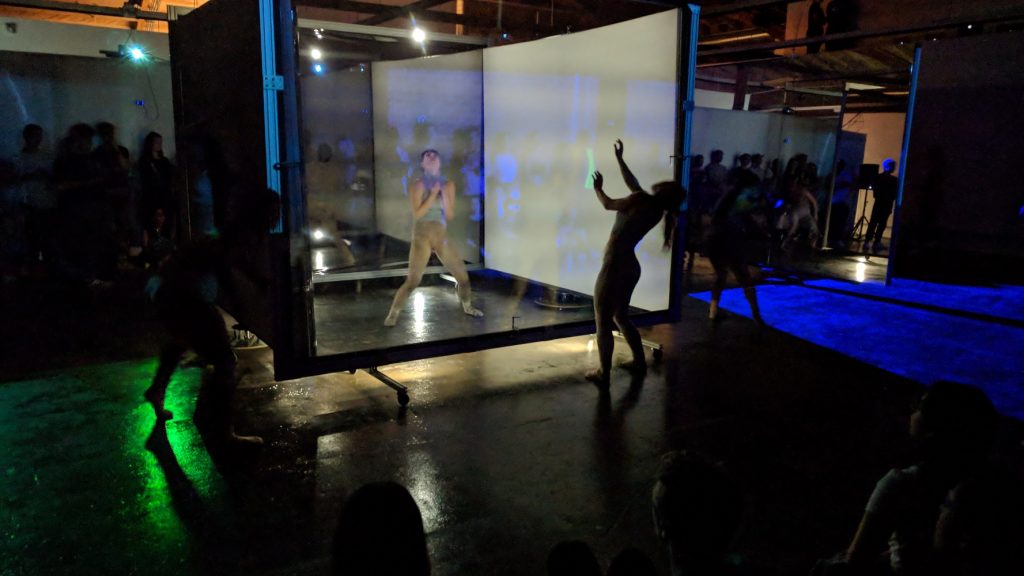
MashUp Contemporary Dance Company – Expansiveness: Changing Perspective – Photo: Roger Martin Holman for LA Dance Chronicle
At the beginning of the shutdown, Harris had weekly Zoom meetings with her company and then after April those meetings became monthly. She worked on creative projects virtually with each individual dancer and hosted online classes three times a week. “It is hard to stay positive,” Harris said. “What kept me grounded as a choreographer and artist is the idea that this time will end and we will return to the stage, the classroom and the studio. We will be able to make art again and press on. But as mounting pressures of racial and social justice exploded, It was hard to be focused to feel excited about the future.”
Harris went on to say that as the election gets closer, she finds that she has become more nervous and is experiencing more stress. “ I feel sick to my stomach about what I feel is the impending doom and fall into dictatorship and fascism. As a Jewish woman, I fear the current administration’s racist and antiemetic hateful undertones. I worry that if we do not turn this around, many artists, including myself will need to leave the country.” She said.
Next week’s Part VI will be the conclusion of the series looking at the effects of the pandemic on dance in Los Angeles. It will cover how the dance artists envision their work being altered by the long period of isolation and shutdown, plus finding out what their immediate needs are to survive artistically.
Written by Jeff Slayton for LA Dance Chronicle.
To read Part I, click HERE. To read Part II, click HERE. To read Part III, click HERE. To read Part IV, click HERE.
Featured image: Screen capture from “You Can’t Stop The Beat” – Courtesy of Janet Roston

